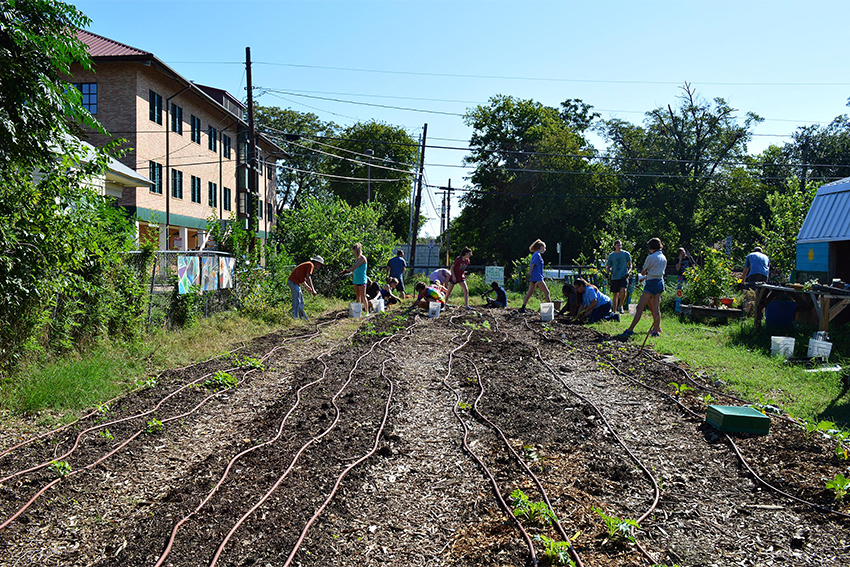Most students would say they don’t have enough time to grab a sandwich in between classes, let alone grow their own kale. But UT’s Microfarm wants to change the way students think about food and is opening up new plots for rent this spring.
“Everyone is welcome (at the Microfarm), no experience required,” said Austin Downey, an English and history junior and a project leader at the farm. “It’s our favorite thing to watch someone who’s never gardened before pull their first carrot out of the ground.”
The Microfarm, funded by the Green Fee and part of the Campus Environmental Center, consists of land managed by a student team and another area serving as a community garden. The garden plots are rented by students to grow arugula, Brussels sprouts, broccoli, cauliflower, artichokes, radishes and more.
The new plots will be located at the Wright-Whitaker Sports Complex although the team already has plots at the farm’s current location at 2204 Leona Street. The farm is changing locations because the original land will be used for graduate student housing, Downey said.
If students want their own plot beginning this February, they can email the project team and pay a fee of $15. If rookies want to learn their way around gardening before they adopt a plot, they can become a volunteer and help once a week with tasks like weeding, planting, harvesting, tilling or composting.
“I don’t think (the new plots) will really have an effect on the farm,” said Emily Rafferty, team member and sustainability studies sophomore. “It will just give more people an opportunity to rent.”
The semesterly rent of Microfarm plots is cheap compared to the amount some Austinites pay to rent out garden space, Rafferty said. Some of the food has been donated in the past to food banks and sold to Jester Center kitchens or farmers markets, but most produce goes home with volunteers. Volunteer and business sophomore Sriram Palepu said he took home 5 pounds of carrots on Sunday that were planted in October.
“I usually just saute whatever I get and add it to some pasta or rice,” Palepu said.
Rafferty said she keeps showing up because she loves the community of people and seeing crops grow from seeds to full–grown vegetables.
“People today are so detached from the food they eat and have no idea how or where it’s grown,” Rafferty said.












